GO
-
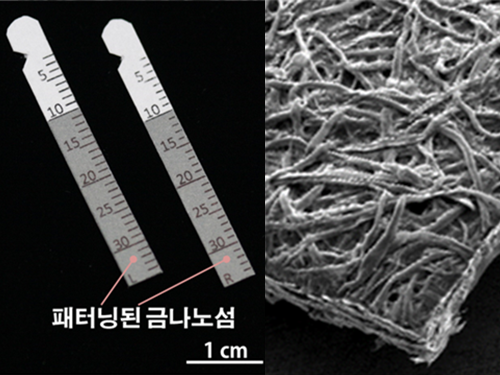 Gout Diagnostic Strip Using a Single Teardrop
A novel diagnostic strip for gout patients using a single teardrop has been announced by KAIST research team. This technology analyzes biological molecules in tears for a non-invasive diagnosis, significantly reducing the time and expense previously required for a diagnosis.
The research team under Professor Ki-Hun Jeong of the Department of Bio and Brain Engineering succeeded in developing an affordable and elaborate gout diagnostic strip by depositing metal nanoparticles on paper. This technology can not only be used in diagnostic medicine and drug testing, but also in various other areas such as field diagnoses that require prompt and accurate detection of a certain substance.
Gout induces pain in joints due to needle-shaped uric acid crystal build up. In general, therapeutic treatments exist to administer pain relief, stimulate uric acid discharge, and uric acid depressant. Such treatments work for temporary relief, but there have significant limitations. Thus, patients are required to regularly check uric acid concentrations, as well as control their diets. Therefore, simpler ways to measure uric acid would greatly benefit gout control and its prevention in a more affordable and convenient manner.
Existing gout diagnostic techniques include measuring uric acid concentrations from blood samples or observing uric acid crystals from joint synovial fluid under a microscope. These existing methods are invasive and time consuming. To overcome their limitations, the research team uniformly deposited gold nanoislands with nanoplasnomics properties on the surface of paper that can easily collect tears.
Nanoplasnomics techniques collect light on the surface of a metal nanostructure, and can be applied to disease and health diagnostic indicators as well as for genetic material detection. Further, metals such as gold absorb stronger light when it is irradiated, and thus can maximize light concentration on board surfaces while maintaining the properties of paper. The developed metal nanostructure production technology allows the flexible manufacturing of nanostructures on a large surface, which in turn allows flexible control of light concentrations.
The research team grafted surface-enhanced Raman spectroscopy on paper diagnostic strips to allow uric acid concentration measurements in teardrops without additional indicators. The measured concentration in teardrops can be compared to blood uric acid concentrations for diagnosing gout.
Professor Jeong explained, “Based on these research results, our strip will make it possible to conduct low-cost, no indicator, supersensitive biological molecule analysis and fast field diagnosis using tears.” He continued, “Tears, as well as various other bodily fluids, can be used to contribute to disease diagnosis and physiological functional research.”
Ph.D. candidate Moonseong Park participated in the research as the first author of the paper that was published in the online edition of ACS Nano on December 14, 2016. Park said, “The strip will allow fast and simple field diagnosis, and can be produced on a large scale using the existing semiconductor process.”
(Figure 1. Optical image of paper gout diagnostic strip covered with gold)
(Figure 2. Scanning delectron microscopic image of paper gout diagnostic strip)
(Figure 3. Scanning electron microscope image of cellulos fiber coated with gold nanoislands)
(Figure 4. Gout diagnosis using tears)
2017.04.27 View 9545
Gout Diagnostic Strip Using a Single Teardrop
A novel diagnostic strip for gout patients using a single teardrop has been announced by KAIST research team. This technology analyzes biological molecules in tears for a non-invasive diagnosis, significantly reducing the time and expense previously required for a diagnosis.
The research team under Professor Ki-Hun Jeong of the Department of Bio and Brain Engineering succeeded in developing an affordable and elaborate gout diagnostic strip by depositing metal nanoparticles on paper. This technology can not only be used in diagnostic medicine and drug testing, but also in various other areas such as field diagnoses that require prompt and accurate detection of a certain substance.
Gout induces pain in joints due to needle-shaped uric acid crystal build up. In general, therapeutic treatments exist to administer pain relief, stimulate uric acid discharge, and uric acid depressant. Such treatments work for temporary relief, but there have significant limitations. Thus, patients are required to regularly check uric acid concentrations, as well as control their diets. Therefore, simpler ways to measure uric acid would greatly benefit gout control and its prevention in a more affordable and convenient manner.
Existing gout diagnostic techniques include measuring uric acid concentrations from blood samples or observing uric acid crystals from joint synovial fluid under a microscope. These existing methods are invasive and time consuming. To overcome their limitations, the research team uniformly deposited gold nanoislands with nanoplasnomics properties on the surface of paper that can easily collect tears.
Nanoplasnomics techniques collect light on the surface of a metal nanostructure, and can be applied to disease and health diagnostic indicators as well as for genetic material detection. Further, metals such as gold absorb stronger light when it is irradiated, and thus can maximize light concentration on board surfaces while maintaining the properties of paper. The developed metal nanostructure production technology allows the flexible manufacturing of nanostructures on a large surface, which in turn allows flexible control of light concentrations.
The research team grafted surface-enhanced Raman spectroscopy on paper diagnostic strips to allow uric acid concentration measurements in teardrops without additional indicators. The measured concentration in teardrops can be compared to blood uric acid concentrations for diagnosing gout.
Professor Jeong explained, “Based on these research results, our strip will make it possible to conduct low-cost, no indicator, supersensitive biological molecule analysis and fast field diagnosis using tears.” He continued, “Tears, as well as various other bodily fluids, can be used to contribute to disease diagnosis and physiological functional research.”
Ph.D. candidate Moonseong Park participated in the research as the first author of the paper that was published in the online edition of ACS Nano on December 14, 2016. Park said, “The strip will allow fast and simple field diagnosis, and can be produced on a large scale using the existing semiconductor process.”
(Figure 1. Optical image of paper gout diagnostic strip covered with gold)
(Figure 2. Scanning delectron microscopic image of paper gout diagnostic strip)
(Figure 3. Scanning electron microscope image of cellulos fiber coated with gold nanoislands)
(Figure 4. Gout diagnosis using tears)
2017.04.27 View 9545 -
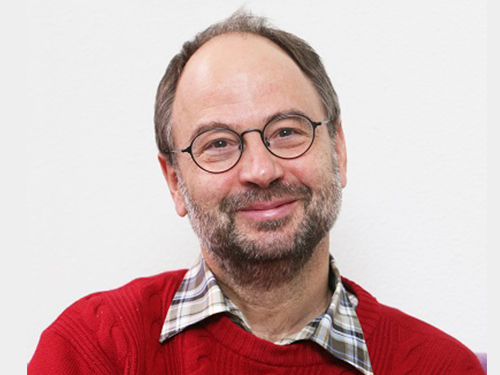 Professor Otfried Cheong Named as Distinguished Scientist by ACM
Professor Otfried Cheong (Schwarzkopf) of the School of Computing was named as a Distinguished Scientist of 2016 by the Association for Computing Machinery (ACM).
The ACM recognized 45 Distinguished Members in the category of Distinguished Scientist, Educator, and Engineer for their individual contributions to the field of computing. Professor Cheong is the sole recipient from a Korean institution. The recipients were selected among the top 10 percent of ACM members with at least 15 years of professional experience and five years of continuous professional membership.
He is known as one of the authors of the widely used computational geometry textbook Computational Geometry: Algorithms and Applications and as the developer of Ipe, a vector graphics editor. Professor Cheong joined KAIST in 2005, after earning his doctorate from the Free University of Berlin in 1992. He previously taught at Ultrecht University, Pohang University of Science and Technology, Hong Kong University of Science and Technology, and the Eindhoven University of Technology.
2017.04.17 View 9066
Professor Otfried Cheong Named as Distinguished Scientist by ACM
Professor Otfried Cheong (Schwarzkopf) of the School of Computing was named as a Distinguished Scientist of 2016 by the Association for Computing Machinery (ACM).
The ACM recognized 45 Distinguished Members in the category of Distinguished Scientist, Educator, and Engineer for their individual contributions to the field of computing. Professor Cheong is the sole recipient from a Korean institution. The recipients were selected among the top 10 percent of ACM members with at least 15 years of professional experience and five years of continuous professional membership.
He is known as one of the authors of the widely used computational geometry textbook Computational Geometry: Algorithms and Applications and as the developer of Ipe, a vector graphics editor. Professor Cheong joined KAIST in 2005, after earning his doctorate from the Free University of Berlin in 1992. He previously taught at Ultrecht University, Pohang University of Science and Technology, Hong Kong University of Science and Technology, and the Eindhoven University of Technology.
2017.04.17 View 9066 -
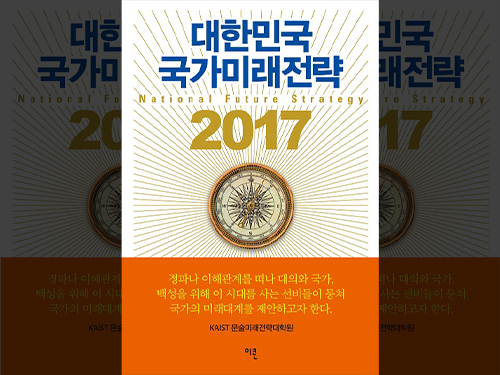 KAIST's Future Strategy Graduate School Holds Its 100th Public Forum
The Graduate School of Future Strategy at KAIST has hosted regularly a public forum on Fridays at the Korea Telecom building in Seoul, to offer an open platform for policy discussions and exchange ideas since its establishment in 2012.
This Friday’s forum on March 17, 2017 will mark the hundredth of its kind.
The forum has served as a weekly meeting at which experts and citizens from various professional backgrounds gather together and share their views and insights on strategies and policies to help Korea advance toward a better future. As a result, the forum has implemented its role as a catalyst for “collected intellectualism.”
To date, over 200 participants have engaged in discussions and put forward suggestions on such issues as future strategies, a smart defense system, mid- and long-term national development, artificial intelligence (AI), the Internet of Things, augmented reality, robotics, and future automotive technology. The forum has also taken the lead in identifying issues that will become important to national progress in the era of the Fourth Industrial Revolution.
Among the notable topics discussed so far, the aftermath of the Al-embedded video game of Go, AlphpaGo’s match against a human player, which took place in March last year in Korea, attracted a great deal of attention from the public.
The Friday’s forum will discuss ways to unify the divisive public views over the recent political issue of the presidential impeachment and explore strategies to promote mutual growth and solidity. The event will be conducted in Korean only, and also be aired live via the Africa Web Television and Facebook for online participation.
Ideas proposed and suggested during discussions are compiled and published annually as a book entitled “The National Future Strategy for the Republic of Korea.”
Professor Kwang Hyung Lee of the Future Strategy Graduate School said, “When we first envisioned this setting for these discussions, no one at our school really thought that we would host the forum 100 times. It has lasted much longer than we could have imagined, and we hope that this will continue to remain relevant to society as a meaningful public venue to think about our nation’s future.”
2017.03.16 View 4415
KAIST's Future Strategy Graduate School Holds Its 100th Public Forum
The Graduate School of Future Strategy at KAIST has hosted regularly a public forum on Fridays at the Korea Telecom building in Seoul, to offer an open platform for policy discussions and exchange ideas since its establishment in 2012.
This Friday’s forum on March 17, 2017 will mark the hundredth of its kind.
The forum has served as a weekly meeting at which experts and citizens from various professional backgrounds gather together and share their views and insights on strategies and policies to help Korea advance toward a better future. As a result, the forum has implemented its role as a catalyst for “collected intellectualism.”
To date, over 200 participants have engaged in discussions and put forward suggestions on such issues as future strategies, a smart defense system, mid- and long-term national development, artificial intelligence (AI), the Internet of Things, augmented reality, robotics, and future automotive technology. The forum has also taken the lead in identifying issues that will become important to national progress in the era of the Fourth Industrial Revolution.
Among the notable topics discussed so far, the aftermath of the Al-embedded video game of Go, AlphpaGo’s match against a human player, which took place in March last year in Korea, attracted a great deal of attention from the public.
The Friday’s forum will discuss ways to unify the divisive public views over the recent political issue of the presidential impeachment and explore strategies to promote mutual growth and solidity. The event will be conducted in Korean only, and also be aired live via the Africa Web Television and Facebook for online participation.
Ideas proposed and suggested during discussions are compiled and published annually as a book entitled “The National Future Strategy for the Republic of Korea.”
Professor Kwang Hyung Lee of the Future Strategy Graduate School said, “When we first envisioned this setting for these discussions, no one at our school really thought that we would host the forum 100 times. It has lasted much longer than we could have imagined, and we hope that this will continue to remain relevant to society as a meaningful public venue to think about our nation’s future.”
2017.03.16 View 4415 -
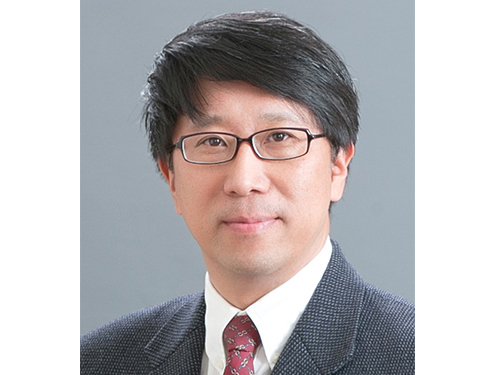 Professor Dongman Lee Wins the 2016 Korea Internet Award
Professor Dongman Lee of KAIST’s School of Computing received the 11th Korea Internet Award in the category of personal achievement on December 13 at the Creative Economy and Innovation Center in Gyeonggi province.
Hosted by the Ministry of Science, ICT and Future Planning of Korea, the Internet Award recognizes leaders in the Internet industry and their contributions.
Since 2010, Professor Lee has conducted research on the Internet of Things (IoT) platforms, resulting in the publication of five research papers in Science Citation Index (SCI) journals, ten papers in Korean journals, 30 best papers nominations at international conferences, and the registration of eleven patents. He has also worked on the creation of an IoT ecosystem through his research on object interworking platforms that can provide diverse user-customized services in the IoT environment.
His research team built a test bed for applicable IoT platforms on the 8th floor of the IT Convergence Center on campus to implement experiments and collect various data, thereby creating a foundation to carry out research projects in this field.
Professor Lee has helped the advancement of an Internet governance system in Korea by researching Internet governance policies, holding important posts in related academic societies including the Chairman of the Korea Internet Governance Alliance (KIGA) Council, and hosting major conferences such as the Asia Pacific Regional Internet Governance Forum (APrIGF).
2016.12.20 View 9573
Professor Dongman Lee Wins the 2016 Korea Internet Award
Professor Dongman Lee of KAIST’s School of Computing received the 11th Korea Internet Award in the category of personal achievement on December 13 at the Creative Economy and Innovation Center in Gyeonggi province.
Hosted by the Ministry of Science, ICT and Future Planning of Korea, the Internet Award recognizes leaders in the Internet industry and their contributions.
Since 2010, Professor Lee has conducted research on the Internet of Things (IoT) platforms, resulting in the publication of five research papers in Science Citation Index (SCI) journals, ten papers in Korean journals, 30 best papers nominations at international conferences, and the registration of eleven patents. He has also worked on the creation of an IoT ecosystem through his research on object interworking platforms that can provide diverse user-customized services in the IoT environment.
His research team built a test bed for applicable IoT platforms on the 8th floor of the IT Convergence Center on campus to implement experiments and collect various data, thereby creating a foundation to carry out research projects in this field.
Professor Lee has helped the advancement of an Internet governance system in Korea by researching Internet governance policies, holding important posts in related academic societies including the Chairman of the Korea Internet Governance Alliance (KIGA) Council, and hosting major conferences such as the Asia Pacific Regional Internet Governance Forum (APrIGF).
2016.12.20 View 9573 -
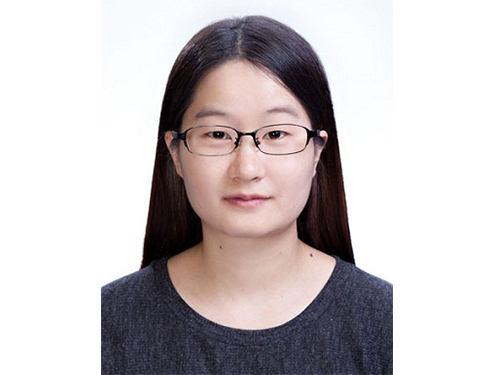 KAIST's Doctoral Candidate Receives the 2015 Google Ph.D. Fellowship
Shin-Ae Woo, a doctoral student of Professor Su-Bok Moon of KAIST’s School of Computer Engineering, has received the 2015 Google Ph.D. Fellowship.
The fellowship’s term lasts one year, starting September 2015.
The fellowship awarded Ms. Woo with USD 10,000 of cash prize, an opportunity to meet a Google research mentor, and a summer internship at the company.
Created in 2009, the Google Ph.D. Fellowship annually recognizes outstanding doctoral students around the world in computer science and its related fields.
This year, a total of 44 doctoral students including Ms. Woo, who is studying networking and distributed system, have been nominated.
She has also received the NSDI (Networked Systems Design and Implementation) 2015 Community Award and the 2014 Samsung Human Technology Journal Silver Prize for her research work on “Design and Implementation of Highly Scalable User-level TCP Stack for Multicore Systems” and “Comparison of Caching Strategies in Modern Cellular Backhaul Networks.”
Currently, Ms. Woo is working with UC Berkeley faculty on next-generation data centers for a research exchange program.
2015.09.15 View 7665
KAIST's Doctoral Candidate Receives the 2015 Google Ph.D. Fellowship
Shin-Ae Woo, a doctoral student of Professor Su-Bok Moon of KAIST’s School of Computer Engineering, has received the 2015 Google Ph.D. Fellowship.
The fellowship’s term lasts one year, starting September 2015.
The fellowship awarded Ms. Woo with USD 10,000 of cash prize, an opportunity to meet a Google research mentor, and a summer internship at the company.
Created in 2009, the Google Ph.D. Fellowship annually recognizes outstanding doctoral students around the world in computer science and its related fields.
This year, a total of 44 doctoral students including Ms. Woo, who is studying networking and distributed system, have been nominated.
She has also received the NSDI (Networked Systems Design and Implementation) 2015 Community Award and the 2014 Samsung Human Technology Journal Silver Prize for her research work on “Design and Implementation of Highly Scalable User-level TCP Stack for Multicore Systems” and “Comparison of Caching Strategies in Modern Cellular Backhaul Networks.”
Currently, Ms. Woo is working with UC Berkeley faculty on next-generation data centers for a research exchange program.
2015.09.15 View 7665 -
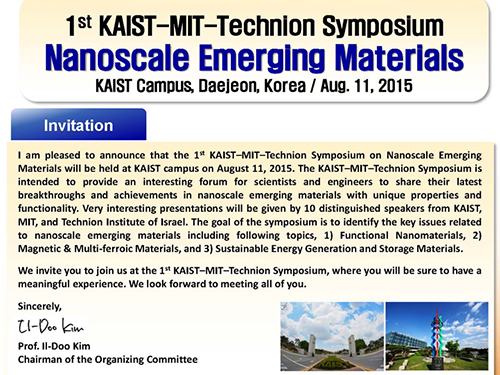 KAIST holds the 2015 KAIST-MIT-Technion International Symposium on Nano Science
The 2015 KAIST-MIT-Technion International Symposium on Nano Science was held on August 11, 2015 at the KAIST campus. The event took place under three subtopics: Materials for Production and Storage of Renewable Energy, Functional Materials, and Multiferroic Materials.
The joint symposium invited more than 300 experts in material science and engineering including ten speakers and panelists. From MIT (Massachusetts Institute of Technology), Professors Harry L. Tuller and Geoffrey S. Beach in the Department of Material Engineering, as well as Professor Gregory Rutledge in the Department of Chemical Engineering joined the symposium. Professor Avner Rothschild in the Department of Material Engineering and Professor Yair Ein-Eli in the Department of Chemical Engineering at Technion Institute of Technology in Israel also participated.
From KAIST, Professors Il-Doo Kim, Byong-Guk Park, and Yeon-Sik Jung in the Department of Materials Science and Engineering, Professor Chan-Ho Yang in the Department of Physics, and Professor Doh-Chang Lee in the Department of Chemical and Biomolecular Engineering spoke at the event. The list of topics included “Next Generation Lithium-Air Battery,” “Nano Materials for High Performance Energy Storage System,” and “Iron Oxide Nanoparticles Photoelectrode for the Conversion and Storage of Solar Energy.”
In its efforts to promote cooperation among the three universities, KAIST plans to send six students to MIT and one student to Technion for joint research.
Professor Il-Doo Kim, who organized the symposium said, “We believe this kind of international gathering will serve as an opportunity for scholars from leading universities to share their expertise in material science and help them better understand on the recent trends in nanoscience and its related technology.”
2015.08.12 View 9505
KAIST holds the 2015 KAIST-MIT-Technion International Symposium on Nano Science
The 2015 KAIST-MIT-Technion International Symposium on Nano Science was held on August 11, 2015 at the KAIST campus. The event took place under three subtopics: Materials for Production and Storage of Renewable Energy, Functional Materials, and Multiferroic Materials.
The joint symposium invited more than 300 experts in material science and engineering including ten speakers and panelists. From MIT (Massachusetts Institute of Technology), Professors Harry L. Tuller and Geoffrey S. Beach in the Department of Material Engineering, as well as Professor Gregory Rutledge in the Department of Chemical Engineering joined the symposium. Professor Avner Rothschild in the Department of Material Engineering and Professor Yair Ein-Eli in the Department of Chemical Engineering at Technion Institute of Technology in Israel also participated.
From KAIST, Professors Il-Doo Kim, Byong-Guk Park, and Yeon-Sik Jung in the Department of Materials Science and Engineering, Professor Chan-Ho Yang in the Department of Physics, and Professor Doh-Chang Lee in the Department of Chemical and Biomolecular Engineering spoke at the event. The list of topics included “Next Generation Lithium-Air Battery,” “Nano Materials for High Performance Energy Storage System,” and “Iron Oxide Nanoparticles Photoelectrode for the Conversion and Storage of Solar Energy.”
In its efforts to promote cooperation among the three universities, KAIST plans to send six students to MIT and one student to Technion for joint research.
Professor Il-Doo Kim, who organized the symposium said, “We believe this kind of international gathering will serve as an opportunity for scholars from leading universities to share their expertise in material science and help them better understand on the recent trends in nanoscience and its related technology.”
2015.08.12 View 9505 -
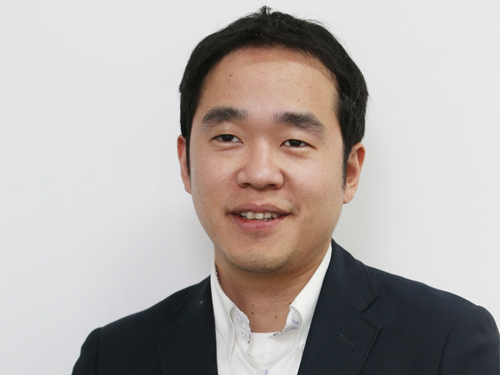 Professor Jinwoo Shin of the Electrical Engineering Department Receives the 2015 ACM SIGMETRICS Rising Star Research Award
Professor Jinwoo Shin of the Electrical Engineering Department at KAIST was selected as the recipient of the 2015 ACM SIGMETRICS Rising Star Research Award.
As a computer systems performance evaluation community, SIGMETRICS annually awards a junior researcher. He was selected as the 8th annual recipient, being the first from an Asian university.
Professor Shin was recognized for his work in theoretical analysis of stochastic queueing networks and machine learning. He said, “I would like to contribute to the expansion of computing and network theory in Korea wherein those fields are unrecognized.”
He has received numerous awards including Kennneth C. Sevcik (Best Student Paper) Award at SIGMETRICS 2009, George M. Sprowls (Best MIT CS PhD Thesis) Award 2010, Best Paper Award at MOBIHOC 2013, Best Publication Award from INFORMS Applied Probability Society 2013, and Bloomberg Scientific Research Award 2015.
2015.06.21 View 10713
Professor Jinwoo Shin of the Electrical Engineering Department Receives the 2015 ACM SIGMETRICS Rising Star Research Award
Professor Jinwoo Shin of the Electrical Engineering Department at KAIST was selected as the recipient of the 2015 ACM SIGMETRICS Rising Star Research Award.
As a computer systems performance evaluation community, SIGMETRICS annually awards a junior researcher. He was selected as the 8th annual recipient, being the first from an Asian university.
Professor Shin was recognized for his work in theoretical analysis of stochastic queueing networks and machine learning. He said, “I would like to contribute to the expansion of computing and network theory in Korea wherein those fields are unrecognized.”
He has received numerous awards including Kennneth C. Sevcik (Best Student Paper) Award at SIGMETRICS 2009, George M. Sprowls (Best MIT CS PhD Thesis) Award 2010, Best Paper Award at MOBIHOC 2013, Best Publication Award from INFORMS Applied Probability Society 2013, and Bloomberg Scientific Research Award 2015.
2015.06.21 View 10713 -
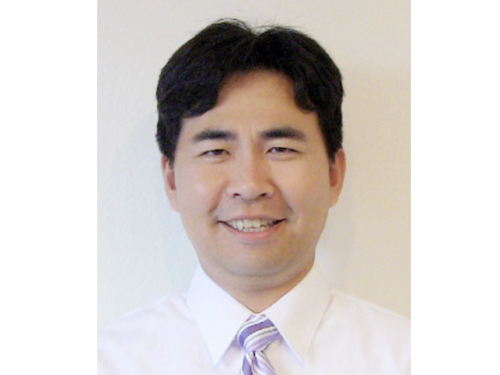 Professor Sung Yong Kim Presents a Keynote Speech at the International Ocean Color Science Meeting (IOCS) 2015
Professor Sung Yong Kim of the Mechanical Engineering Department at KAIST delivered a keynote speech at the International Ocean Color Science Meeting (IOCS) 2015 held in San Francisco on June 15-18, 2015. His speech was entitled “Research and Applications Using Sub-mesoscale GOCI (Geostationary Ocean Color Imager) Data.”
The IOCS, organized by the International Ocean Color Coordinating Group (IOCCG), is a community consultation meeting providing communication and collaboration between space agencies and the ocean color community, building strong ties among international representatives of the ocean color communities, and providing a forum for discussion and the evolution of community thinking on a range of issues.
Professor Kim was recognized for his contribution towards the development of remote exploration of sub-mesoscale processes including eddies, fronts, and environmental fluid dynamics.
He also attended the 26th General Assembly of the International Union of Geodesy and Geophysics (IUGG) in Prague, the Czech Republic, on June 22, 2015 and gave a presentation on the sub-mesoscale eddies circulation research.
2015.06.12 View 10702
Professor Sung Yong Kim Presents a Keynote Speech at the International Ocean Color Science Meeting (IOCS) 2015
Professor Sung Yong Kim of the Mechanical Engineering Department at KAIST delivered a keynote speech at the International Ocean Color Science Meeting (IOCS) 2015 held in San Francisco on June 15-18, 2015. His speech was entitled “Research and Applications Using Sub-mesoscale GOCI (Geostationary Ocean Color Imager) Data.”
The IOCS, organized by the International Ocean Color Coordinating Group (IOCCG), is a community consultation meeting providing communication and collaboration between space agencies and the ocean color community, building strong ties among international representatives of the ocean color communities, and providing a forum for discussion and the evolution of community thinking on a range of issues.
Professor Kim was recognized for his contribution towards the development of remote exploration of sub-mesoscale processes including eddies, fronts, and environmental fluid dynamics.
He also attended the 26th General Assembly of the International Union of Geodesy and Geophysics (IUGG) in Prague, the Czech Republic, on June 22, 2015 and gave a presentation on the sub-mesoscale eddies circulation research.
2015.06.12 View 10702 -
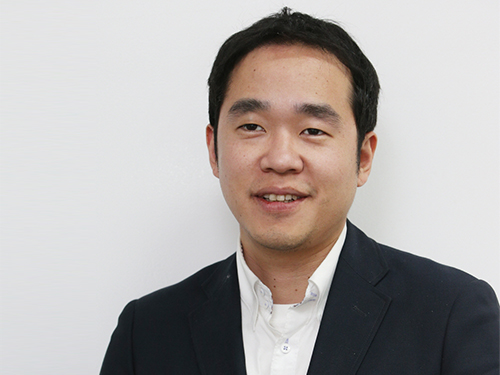 Professor Jinwoo Shin Receives the Bloomberg Scientific Research Award
Professor Jinwoo Shin (https://sites.google.com/site/mijirim/) of the Electrical Engineering Department at KAIST has been selected as one of the three winners to receive the first Bloomberg Scientific Research Award this month. The newly created award is presented to researchers in computer science who conduct high-quality research in such areas as machine learning, natural language processing, machine translation, statistics, and theory.
Professor Shin submitted his research proposal entitled “Scalable Probabilistic Deep Leaning,” and the award will support funding his research for one year. For details, please click on the link below for an article released by Bloomberg News, announcing the winners of the award:
Bloomberg News, April 28, 2015
“Announcing the Winners of the Bloomberg’s First Scientific Research Program”
https://3blmedia.com/News/Announcing-Winners-Bloombergs-First-Scientific-Research-Program
2015.04.30 View 9098
Professor Jinwoo Shin Receives the Bloomberg Scientific Research Award
Professor Jinwoo Shin (https://sites.google.com/site/mijirim/) of the Electrical Engineering Department at KAIST has been selected as one of the three winners to receive the first Bloomberg Scientific Research Award this month. The newly created award is presented to researchers in computer science who conduct high-quality research in such areas as machine learning, natural language processing, machine translation, statistics, and theory.
Professor Shin submitted his research proposal entitled “Scalable Probabilistic Deep Leaning,” and the award will support funding his research for one year. For details, please click on the link below for an article released by Bloomberg News, announcing the winners of the award:
Bloomberg News, April 28, 2015
“Announcing the Winners of the Bloomberg’s First Scientific Research Program”
https://3blmedia.com/News/Announcing-Winners-Bloombergs-First-Scientific-Research-Program
2015.04.30 View 9098 -
 The President of KAIST is appointed to the 10th International Academic Advisory Panel for the Singapore government
President Steve Kang will serve as a panelist to the 10th International Academic Advisory Panel (IAAP) of the Ministry of Education, Singapore, from February 2014 to February 2016. He was the first Korean who has ever served the panel for the Singapore government.
Chaired by the Deputy Prime Minister and the Minister of Finance of Singapore and comprised of 11 eminent international academics and corporate leaders, the IAAP was established in 1997 by the Education Ministry to advise the government on developing world-class universities. Since its inaugural meeting in 1997, the panel has met nine times.
The IAAP has been a valuable source of advice and guidance for the Ministry as well as higher education institutions in Singapore. The IAAP’s recommendations have had a significant impact on the development of Singapore’s university sector.
President Kang received his letter of appointment on August 22, 2014. The letter stated that “his experience in leading KAIST and insights on the challenges facing universities internationally will contribute well to the IAAP discussions.”
The 10th IAAP meeting will be held on June 24-26, 2015 in Singapore.
2014.08.25 View 7299
The President of KAIST is appointed to the 10th International Academic Advisory Panel for the Singapore government
President Steve Kang will serve as a panelist to the 10th International Academic Advisory Panel (IAAP) of the Ministry of Education, Singapore, from February 2014 to February 2016. He was the first Korean who has ever served the panel for the Singapore government.
Chaired by the Deputy Prime Minister and the Minister of Finance of Singapore and comprised of 11 eminent international academics and corporate leaders, the IAAP was established in 1997 by the Education Ministry to advise the government on developing world-class universities. Since its inaugural meeting in 1997, the panel has met nine times.
The IAAP has been a valuable source of advice and guidance for the Ministry as well as higher education institutions in Singapore. The IAAP’s recommendations have had a significant impact on the development of Singapore’s university sector.
President Kang received his letter of appointment on August 22, 2014. The letter stated that “his experience in leading KAIST and insights on the challenges facing universities internationally will contribute well to the IAAP discussions.”
The 10th IAAP meeting will be held on June 24-26, 2015 in Singapore.
2014.08.25 View 7299 -
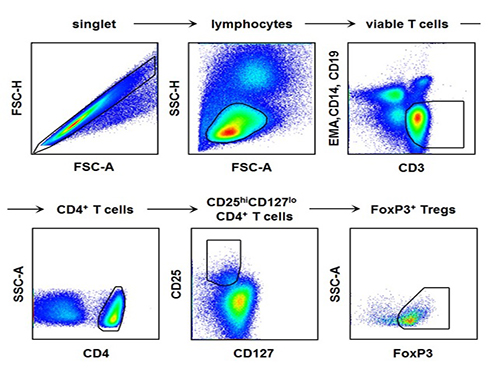 Regulatory T Cells Influence Liver Damage of Hepatitis A Patients
Liver damage becomes more severe with the decrease of regulatory T cells
“This research will aid the development of hepatitis A targeted drug,” said a KAIST researcher.
The KAIST Graduate School of Medical Science and Engineering’s Professor Eui-Cheol Shin and his research team have identified the mechanism, explaining how the regulatory T cells are responsible for the body’s immune system and how they have induced liver damage of hepatitis A patients.
The research results were published online in the July 9th edition of ‘Gut,’ the world’s most prominent journal in the field of gastroenterology.
Hepatitis A is an acute form of hepatitis caused by hepatitis A virus. The virus spreads through oral contact and enters the body via digestive organs.
Regulatory T cells play an important role in maintaining the homeostasis of the body’s immune system by inhibiting the activation of other immune cells. In the case of chronic viral infections, regulatory T cells are known to contribute to the duration of the infection, weakening the immune response to virus infections. However, there has been no information on what roles the regulatory T cells perform in the case of acute viral infections.
The research team used the fluorescence flow cytometry technique to determine the number and characteristics of a variety of immune cells, including regulatory T cells, in the blood of hepatitis A patients.
Consequently, the researchers confirmed that the decrease in the regulatory T cells immune inhibitory ability was consistent with a significant reduction in the number of regulatory T cells in the blood of hepatitis A patients. Furthermore, it was identified that the more noticeable decrease of regulatory T cells led to the occurrence of a more severe liver injury.
The analysis of hepatitis A patient’s blood proved that the cause of the decrease in the number and function of regulatory T cells was the increased expression of cell surface protein ‘Fas,’ which induces cell death.
Professor Shin said, “This study is the first case which proposes the mechanism for clinical aspects in not only hepatitis A, but also acute virus infection.” He added on the future prospect of the research that: “In the future, we can prevent tissue damage by inhibiting cell death of regulatory T cells for severe acute viral infections that do not have an effective treatment for the virus itself.”
[Picture]
The picture shows the process of fluorescence flow cytometry technique to study regulatory T cell in the blood of hepatitis A patients.
2014.08.11 View 11162
Regulatory T Cells Influence Liver Damage of Hepatitis A Patients
Liver damage becomes more severe with the decrease of regulatory T cells
“This research will aid the development of hepatitis A targeted drug,” said a KAIST researcher.
The KAIST Graduate School of Medical Science and Engineering’s Professor Eui-Cheol Shin and his research team have identified the mechanism, explaining how the regulatory T cells are responsible for the body’s immune system and how they have induced liver damage of hepatitis A patients.
The research results were published online in the July 9th edition of ‘Gut,’ the world’s most prominent journal in the field of gastroenterology.
Hepatitis A is an acute form of hepatitis caused by hepatitis A virus. The virus spreads through oral contact and enters the body via digestive organs.
Regulatory T cells play an important role in maintaining the homeostasis of the body’s immune system by inhibiting the activation of other immune cells. In the case of chronic viral infections, regulatory T cells are known to contribute to the duration of the infection, weakening the immune response to virus infections. However, there has been no information on what roles the regulatory T cells perform in the case of acute viral infections.
The research team used the fluorescence flow cytometry technique to determine the number and characteristics of a variety of immune cells, including regulatory T cells, in the blood of hepatitis A patients.
Consequently, the researchers confirmed that the decrease in the regulatory T cells immune inhibitory ability was consistent with a significant reduction in the number of regulatory T cells in the blood of hepatitis A patients. Furthermore, it was identified that the more noticeable decrease of regulatory T cells led to the occurrence of a more severe liver injury.
The analysis of hepatitis A patient’s blood proved that the cause of the decrease in the number and function of regulatory T cells was the increased expression of cell surface protein ‘Fas,’ which induces cell death.
Professor Shin said, “This study is the first case which proposes the mechanism for clinical aspects in not only hepatitis A, but also acute virus infection.” He added on the future prospect of the research that: “In the future, we can prevent tissue damage by inhibiting cell death of regulatory T cells for severe acute viral infections that do not have an effective treatment for the virus itself.”
[Picture]
The picture shows the process of fluorescence flow cytometry technique to study regulatory T cell in the blood of hepatitis A patients.
2014.08.11 View 11162 -
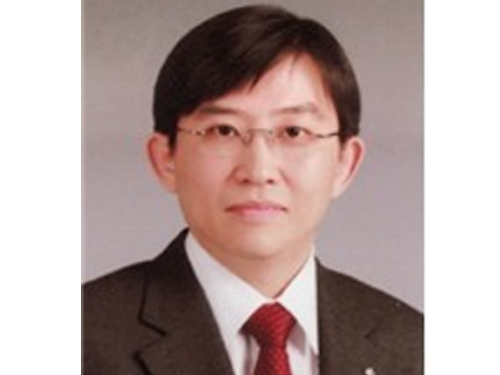 Professor Sang Ouk Kim receives the 2014 Prime Minister Award for Nano Research
Professor Sang Ouk Kim
Sang Ouk Kim, a professor of Materials Science and Engineering at KAIST, received the 2014 Prime Minister Award from the Korean government for his nano research. The award ceremony, Nano Korea 2014, was held on July 2, 2014 at Coex in Seoul, Korea.
Professor Kim was recognized for his research on the control of various shapes of ultra-fine nano-structures using molecular assembly with ductile materials, such as polymers and carbon nano materials, and for his contribution to the growth of the nano field in Korea.
He developed a new molecular assembly control technology, for the first time in the world, which produced large-scale, ultra-fine nanopatterns through controlling the molecular arrangement of block copolymers. Using this technology, he further created a new semiconductor nanotechnology to reinforce the existing lithographic process of semiconductor manufacturing.
In addition, Professor Kim has focused on making a new type of three-dimensional carbon nano-materials by assembling carbon nanotubes or graphene at the molecular level. Developing a new process to produce nano-materials through the chemical doping process of carbon materials, which can be widely applied to solar cells or energy devices, is one of his research interests as well.
Professor Kim has published a total of 124 papers in international journals, such as Nature, Science, Nature Materials, Nature Communications, Advanced Materials, and Nano Letters. He was recently invited by Advanced Materials to contribute a review article for its 25th anniversary issue.
Professor Kim received both the KAIST Academic Award and the 13th Young Scientist Award of Korea in 2010. Since March 2014, he has served as one of the chair professors of KAIST.
Most recently, he was selected as the Scientist of the Month in June 2014 by the Ministry of Science, ICT and Future Planning, Republic of Korea, and the National Research Foundation of Korea.
2014.07.08 View 10260
Professor Sang Ouk Kim receives the 2014 Prime Minister Award for Nano Research
Professor Sang Ouk Kim
Sang Ouk Kim, a professor of Materials Science and Engineering at KAIST, received the 2014 Prime Minister Award from the Korean government for his nano research. The award ceremony, Nano Korea 2014, was held on July 2, 2014 at Coex in Seoul, Korea.
Professor Kim was recognized for his research on the control of various shapes of ultra-fine nano-structures using molecular assembly with ductile materials, such as polymers and carbon nano materials, and for his contribution to the growth of the nano field in Korea.
He developed a new molecular assembly control technology, for the first time in the world, which produced large-scale, ultra-fine nanopatterns through controlling the molecular arrangement of block copolymers. Using this technology, he further created a new semiconductor nanotechnology to reinforce the existing lithographic process of semiconductor manufacturing.
In addition, Professor Kim has focused on making a new type of three-dimensional carbon nano-materials by assembling carbon nanotubes or graphene at the molecular level. Developing a new process to produce nano-materials through the chemical doping process of carbon materials, which can be widely applied to solar cells or energy devices, is one of his research interests as well.
Professor Kim has published a total of 124 papers in international journals, such as Nature, Science, Nature Materials, Nature Communications, Advanced Materials, and Nano Letters. He was recently invited by Advanced Materials to contribute a review article for its 25th anniversary issue.
Professor Kim received both the KAIST Academic Award and the 13th Young Scientist Award of Korea in 2010. Since March 2014, he has served as one of the chair professors of KAIST.
Most recently, he was selected as the Scientist of the Month in June 2014 by the Ministry of Science, ICT and Future Planning, Republic of Korea, and the National Research Foundation of Korea.
2014.07.08 View 10260